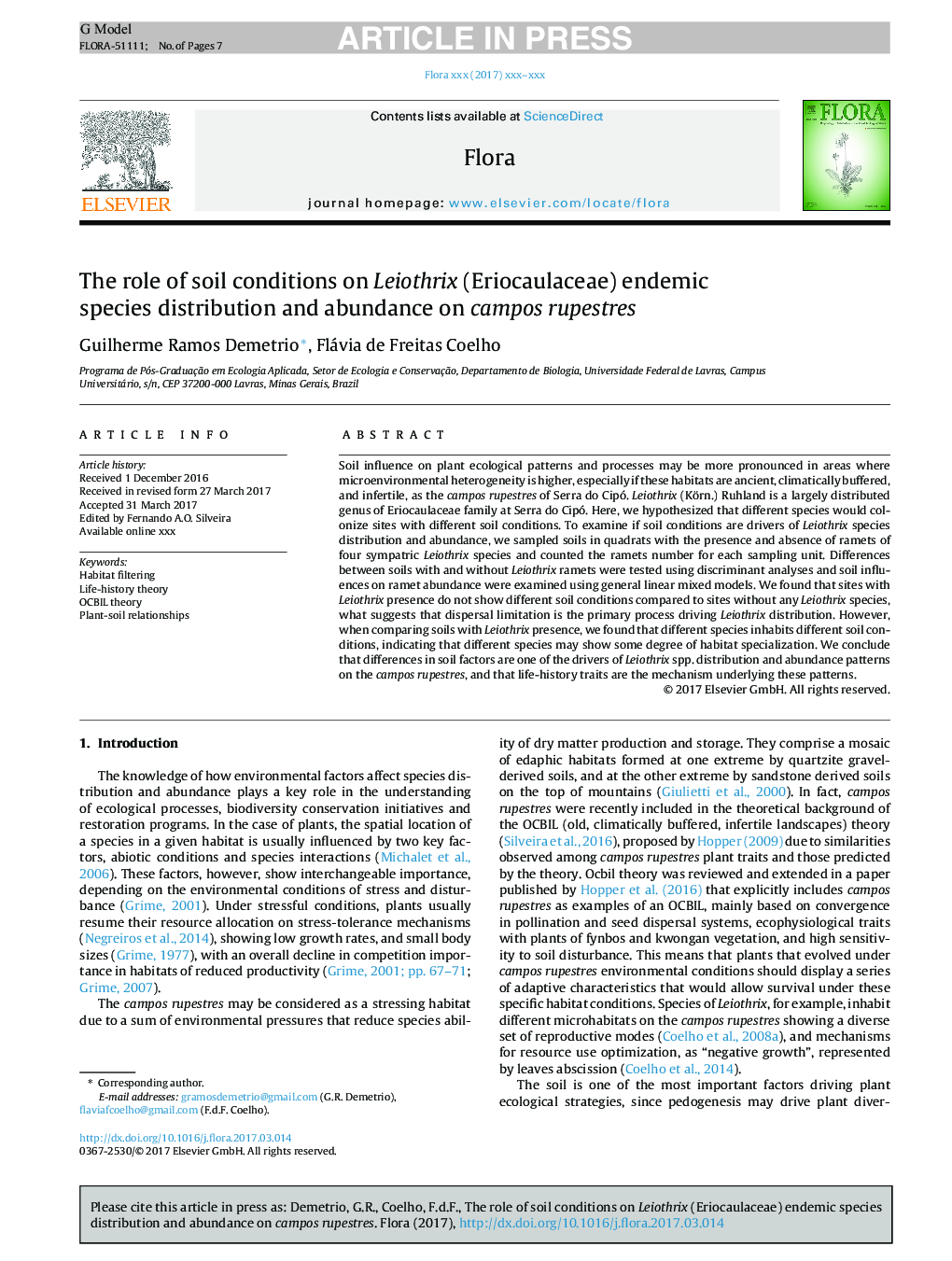| Article ID | Journal | Published Year | Pages | File Type |
|---|---|---|---|---|
| 8470225 | Flora - Morphology, Distribution, Functional Ecology of Plants | 2018 | 7 Pages |
Abstract
Soil influence on plant ecological patterns and processes may be more pronounced in areas where microenvironmental heterogeneity is higher, especially if these habitats are ancient, climatically buffered, and infertile, as the campos rupestres of Serra do Cipó. Leiothrix (Körn.) Ruhland is a largely distributed genus of Eriocaulaceae family at Serra do Cipó. Here, we hypothesized that different species would colonize sites with different soil conditions. To examine if soil conditions are drivers of Leiothrix species distribution and abundance, we sampled soils in quadrats with the presence and absence of ramets of four sympatric Leiothrix species and counted the ramets number for each sampling unit. Differences between soils with and without Leiothrix ramets were tested using discriminant analyses and soil influences on ramet abundance were examined using general linear mixed models. We found that sites with Leiothrix presence do not show different soil conditions compared to sites without any Leiothrix species, what suggests that dispersal limitation is the primary process driving Leiothrix distribution. However, when comparing soils with Leiothrix presence, we found that different species inhabits different soil conditions, indicating that different species may show some degree of habitat specialization. We conclude that differences in soil factors are one of the drivers of Leiothrix spp. distribution and abundance patterns on the campos rupestres, and that life-history traits are the mechanism underlying these patterns.
Keywords
Related Topics
Life Sciences
Agricultural and Biological Sciences
Ecology, Evolution, Behavior and Systematics
Authors
Guilherme Ramos Demetrio, Flávia de Freitas Coelho,
